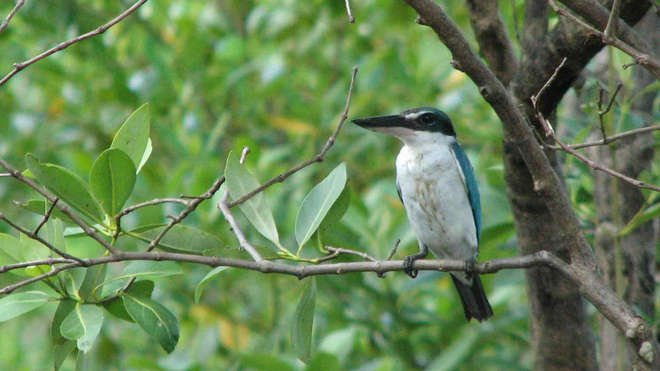Rehabilitating Mangroves in the Philippines
- green admin 1

- Nov 14, 2021
- 3 min read
November 17, 2020
Mangrove forests are one of the world's most vulnerable and underappreciated ecosystems. They provide a diverse range of ecosystem services worth $1.6 billion globally. Mangrove habitats provide livelihoods, important protein supplies, and coastal protection for many coastal communities. Mangroves, with a carbon storage and sequestration potential thought to be greater than tropical forests, appear to play an essential role in climate stabilization, according to compelling research.

Mangrove forest at low tide, Philippines
Mangroves are being cleared at an alarming rate and there are numerous threats to these forests, including; land development, pollution, deforestation for fuel and climate change. One of the major reasons for the loss of mangroves has been to establish fishponds for aquaculture. It has been estimated that since 1980 between 20 and 35% of global mangroves have been lost, with current losses around 1% per year. The last IUCN assessment highlighted that more than one in six mangrove species are currently under threat of extinction.
ZSL’s mangrove work is currently focused in the Philippines, where over 50% of mangroves have been lost. The recent super-typhoon Haiyan (locally known as Yolanda) has highlighted the vital role mangroves play as nature’s bioshields for vulnerable coastal communities. ZSL is working to protect the remaining mangroves and restore lost forests, especially through fishpond reversion, helping to ensure greater food security, improved protection against natural disasters and increased household incomes for local communities.
Rehabilitating Mangroves
ZSL started its mangrove rehabilitation work in 2007 through the Community-based Mangrove Rehabilitation Project (CMRP), with the aim of increasing coastal protection, food resources and diversifying livelihood options. This was achieved through empowering local communities to protect remaining mangrove forests and developing science-based methods for communities to rehabilitate lost forest sites. Over a four year period, close to 100,000 mangroves were planted, with the rehabilitation of 107.8 hectares of mangrove forest well underway. This project resulted in manuals that provide detailed biological and socioeconomic guidance on community-based mangrove rehabilitation and on fishpond reversion to mangroves.
Fishponds to mangroves
In the Philippines, most mangrove forests were lost due to the creation of fishponds for commercial fish and shrimp farming. Often these fishponds are then left abandoned and by law, this should mean they are returned to the Department of the Environment and Natural Resources for reversion. Unfortunately this rarely happens. ZSL has been working to have these Fishpond Lease Agreements (FLAs) cancelled and new healthy mangrove forests to be cultivated at these abandoned pond sites. Our focus has been in Panay, Philippines, which has the highest area of fishponds in the Philippines. We have developed a technical manual demonstrating methods for fishpond reversion.

Mangrove ecotourism
ZSL helped establish a mangrove eco-park in Panay, Philippines: The Kantunggan It Ibajay Eco-park in Aklan has over 1km of boardwalks for visitors to explore the extraordinarily diverse mangrove forest and associated wildlife. Highlights of this eco-park are the centuries old mangroves in the centre of the forest which are over eight metres in diameter. This eco-park is managed by local community groups and helps raise awareness of the importance of mangroves, while providing valuable additional income for the local communities who manage the park. A second mangrove eco-park is under construction in Pedada, Ajuy, which is also on Panay island.
Mangroves in Marine Protected Areas
ZSL is taking a new approach by integrating mangroves into marine protected areas (MPAs). Current MPAs are largely focussed on coral reefs with the average size on an MPA in the Philippines of between 10-30 hectares. By adopting a strategy of combining mangroves, seagrasses and coral reefs the average size of these MPAs has increased to around 400 hectares. So far ZSL have successfully integrated mangroves into six MPA sites in Panay and Bohol.
Mangrove and Beach Forest training course
ZSL-Philippines has built a solid track record of 21 training courses on mangrove rehabilitation over the past six years, graduating more than 1000 participants from various institutions and organisations.
The Mangrove and Beach Forest training course is a three-day course, which aims to enable communities to become more resilient to natural disasters, using the science-based protocols for the protection and restoration of their coastal greenbelt through a series of lectures and field visits.
The Training of Trainers course is a five-day programme, which includes a series of lectures, group exercises, field visits and practicum sessions. It aims to build the capacity of the participants to train mangrove workers, practitioners, people’s organisations and advocates using science-based protocols in mangrove and beach forest conservation and rehabilitation.

_edited.png)






great